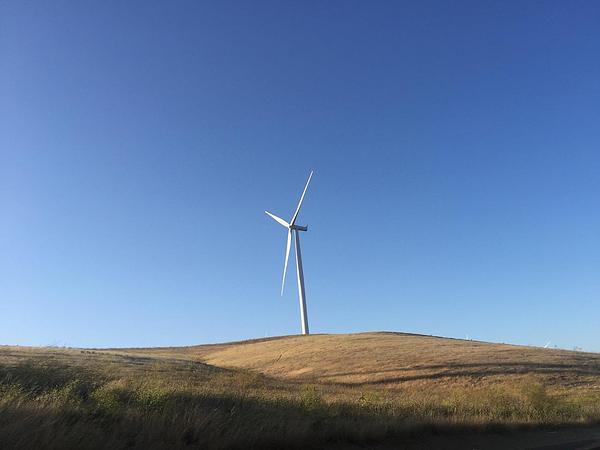Heating
The challenge of decarbonising heat is recognised as one of the most significant and complex for progressing towards achieving our net zero targets. Of Scotland’s total energy consumption (161 TWh), heating its building stock accounts for half (SESH). For the public sector, natural gas (a fossil fuel composed mainly of methane) dominates energy consumption in buildings, in 2021 it was the largest single reported source of GHGs at 824,281 tCO2e per annum, additionally 89,348 tCO2e were emitted from other fossil fuel derived heating sources (Public Bodies Climate Change 2021/22 Analysis Report). In the UK, mains gas is used primarily for heating (76%) followed by for hot water (23%) and cooking (1%) (CREDS, 2019).
To meet Scotland’s emissions targets, we must reduce significantly - and eventually phase out entirely - our use of fossil derived fuels in heating systems. By 2030, we will need to reduce fossil fuel consumption for heat in buildings by at least 28 TWh, of which at least 21 TWh will be natural gas, to meet emissions targets (Heat in Buildings Strategy, 2021). Renewable heat is the term used to describe thermal energy from a renewable source; examples include sourcing geothermal heat through zero direct emission heating technologies (ZDETs) such as ground-source heat pumps or the combustion of sustainably sourced non-fossil fuels.
A two-pronged approach is needed to decarbonise the heating of Scotland’s buildings:
- Improve the energy efficiency of building stock to reduce heat demand; and
- Accelerate the deployment of zero direct emissions heating systems (ZDETs) to replace fossil fuel heating.
While both actions are required to achieve results, properties should first be retrofitted to a sustainably energy efficient standard before installing ZDETs. Otherwise, properties will continue to behave “like a sieve” thus requiring a significantly higher than truly necessary energy demand.
Electricity
This page is primarily focused on operational heating emissions because the majority of building energy demand is used for space and water heating. However, buildings also have significant emissions associated with their operational electricity use (e.g. for lighting and electronic appliances). In these cases, the resulting magnitude of GHG emissions is directly related to the carbon intensity of the electricity used (either from the national grid or from renewable microgeneration). Reducing electricity demand through behavioural change and the use of smart and energy efficient technologies is also extremely important.
Building Type and Energy Consumption
Most publicly owned or controlled buildings are non-domestic. These vary greatly in size and energy consumption. 23,000 non-domestic buildings in Scotland are under public ownership, approximately 11% of the national total (Heat in Buildings Strategy). Non-domestic buildings account for 12% (17 TWh) of Scotland’s energy consumption and 7% of Scotland’s total greenhouse gas emissions.
Around 12% of Scotland’s 2.5 million domestic homes are owned by local authorities to provide social housing. Domestic homes account for around 30% of Scotland’s total energy consumption (44 TWh) and approximately 80% of them use mains gas as their primary heating fuel.
A commonly used metric for building energy use is kWh/m2/yr - the energy use per square metre that is required by a building over a year. This includes regulated (i.e. hot water, space heating and cooling, lighting and ventilation) and unregulated loads (e.g. lifts, IT and appliances).
Scotland’s National Target Overview
Scotland has ambitious plans to reduce emissions in the building sector (domestic, public and commercial buildings) by 68% by 2023 compared to 2020 levels and to reach zero emissions in 2045, as set out in the update to Scotland's 2018 to 2032 Climate Change Plan. More specifically for public sector owned non-domestic buildings, the government is committed to developing a series of phased targets for decarbonisation starting in 2024 so that by 2038 all publicly owned buildings meet zero direct emission heating requirements.
Current and Expected Key Overarching Policies
- The Heat in Buildings Strategy (Oct 2021) sets out a pathway to decarbonise Scotland’s building stock in line with our legislated climate change targets. It builds on the policies of the Climate Change Plan Update (2020) bringing together energy efficiency and heat decarbonisation ambitions into a single framework to provide an update to the Energy Efficient Scotland Route Map (2018) and the Heat Policy Statement (2015). It aligns with the Scottish Government and Scottish Green Party Shared Policy Programme (2021), the Housing to 2040 Strategy (Mar 2021) and the National Performance Framework. An update on progress against this strategy was published in 2022.
- The Energy Strategy and Just Transition Plan (draft published Jan 2023, final version due late 2023) sets out a coherent whole-system vision for a just transformation of Scotland’s energy system to 2045 and a route map of ambitions and actions that will guide decision-making and policy support over the next decade. Chapter 4.1 discusses heat in buildings and the plan also discusses renewable heat generation and hydrogen.
On the horizon… the Heat in Buildings Bill
- The Heat in Buildings Bill is a key piece of legislation currently in development, a draft is expected to be published for consultation in 2023. It aims to turn the ambitions in the Heat in Buildings Strategy 2021 into developed long term policy proposals, producing the promised regulatory framework for low-carbon heating and energy efficiency in existing buildings, and an overall framework for monitoring delivery. This will be crucial for the development of phased targets for all publicly owned buildings to meet zero emission heating requirements.
- An updated Scottish government Climate Change Plan will set policies out to 2040. A draft will be released in November 2023 with the final report released in March 2025.

